Alicia Villanueva started her tamale business in her kitchen. She’d clean houses and care for disabled people all day, put her kids to bed, then quietly make 100 to 150 tamales at night. She’d sleep for two hours, get up, take the kids to school, head to work, and then, before dinner rolled around again, she’d sell her tamales door to door for $1.50 apiece.
Eighteen years later, Alicia’s Tamales Los Mayas turns out 40,000 tamales a month from its 6,000-square-foot factory in Hayward, California. Customers can find them in retail stores in Northern California, including 44 Whole Foods locations, and, in fall 2019, inside the NBA Golden State Warriors’ new arena in San Francisco.
Along her path from door-to-door sales to Whole Foods, a few key strategies have helped Villanueva — who had no MBA, no business experience and limited resources — move forward where many flounder and fail or burn out and quit.
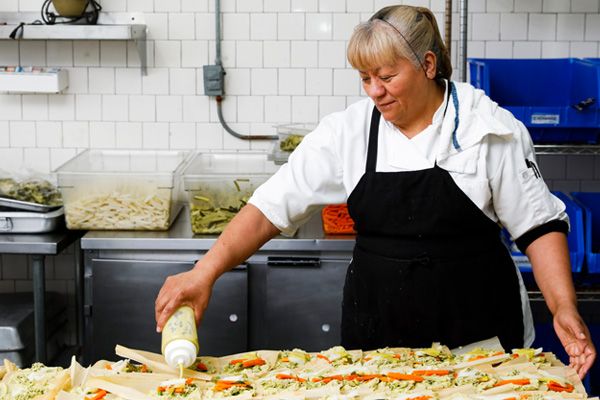
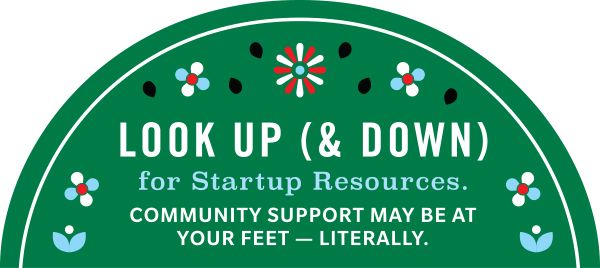
Villanueva knew her tamales were good — she’d grown up making them with her mother and her abuela. But a few years in, she couldn’t see a path to scaling up her operation.
“I was like, ‘Alicia, you are doing something wrong,’” she remembers. One day in 2008, despairing, she looked down in prayer and spotted a stray flyer for a local nonprofit offering free small-business classes and mentoring to women entrepreneurs. It was all she needed to get started.
A good idea only gets you so far. Ask for help. Then ask for more.
What did Villanueva do right? She sought expert advice and business-counseling classes, says Martin Zwilling, founder and CEO of a consulting company for startup and small-business owners. Often entrepreneurs with good ideas charge ahead blindly — and fail, he says.
Local resources abound; find them by networking through local organizations, as Villanueva did, and talking to the owners of similar businesses.
“Everyone is willing to help,” Zwilling says. “Don’t be discouraged by one turndown.”
One community resource led to another. Through the first nonprofit, Villanueva struck gold when she learned of La Cocina, a local food-business incubator for women.
La Cocina gave Villanueva an education — complete with homework — in the four foundations of a strong business: marketing, product development, operations and finance.
When she wrote her first business plan, Villanueva followed her instincts: “It just came to me,” she says. “I wanted to cook 4,000 tamales a month.” At La Cocina, she built out that plan to include a strong foundation for steady growth and reasonable goals.
The nonprofit also helped her connect with other resources — so when she made the leap to her own leased factory, she was able to negotiate a $100,000 small-business loan for renovations and equipment from a community-focused lender.
A good business plan isn’t just for owners. Lenders like them, too
“A business plan helped her think through and document the actual needs of her business,” says Zwilling. “And if you need an investor or bank loan — as she did — it’s also important to them.”
His tips for writing one:
- Start with one of the widely available online samples or plan-building tools.
- Review it with the owner of a similar business.
- Aim for about 10 pages, total.
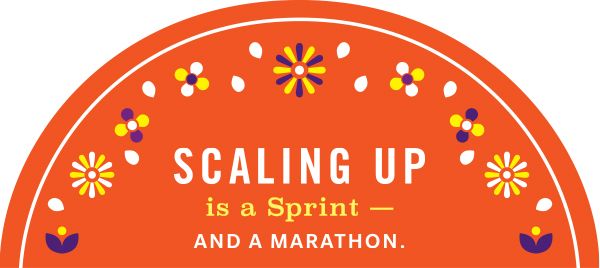
One week after starting at La Cocina, Villanueva got a call: Could she provide 1,500 tamales for a street food festival? She’d never made more than 150 at a time, with the help of her son Pedro. But there was only one answer: “Yes.” Then she hired a woman she’d met through the nonprofit to chop and cook, freeing Villanueva to figure out the production systems that would help her pull off the huge order. They did it.
Scaling up meant not just building systems but figuring out how to sell more tamales: what outlets to sell through, what it would cost to make them, what she’d need to charge to earn a profit. La Cocina opened a key door: she was able to rent space in its commercial kitchen, allowing her to sell through catering, festivals and farmers markets.
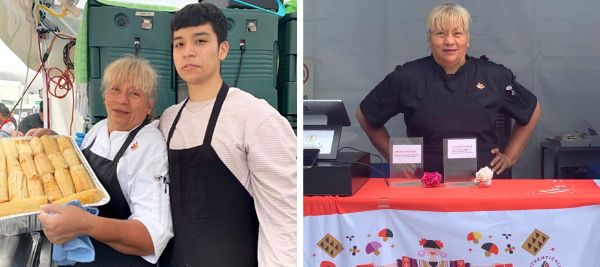
Soon after the street festival, when Villanueva was invited to a bigger, three-day music festival, she took the next steps toward scaling up: figuring out how many thousands of dollars she’d need to cover the cost of making enough tamales for the festival — and thinking through what would happen if they didn’t sell. Those numbers helped her negotiate the contract. She’s sold her tamales at the festival for four years now.
Later, when Villanueva moved into her factory, she faced another immediate reality: her rent jumped to $4,400 a month.
“That’s a lot of tamales,” she says.
Adjusting her recipes so she could make larger batches without changing the flavor took her a full year of tinkering and testing. “I’ve been making tamales all my life, so that was a shock,” she says. And it wasn’t something someone could do for her.
She also had to learn how to use industrial-scale equipment — a mixer that could handle 30 pounds of masa at a time, 100-quart pots for cooking salsa, high-powered commercial steamers.
And she had to identify new markets and develop new products — fruit-based dessert tamales and Mexican specialties like ceviche and pozole. She hired a business coach, too.
By the time she graduated from La Cocina in 2016, Villanueva was making 17,000 tamales a month.
Sometimes you risk a short-term loss for a long-term win.
In jumping at the 1,500-tamale job, Villanueva took a calculated risk: a tenfold increase in production can jeopardize quality, says Minh Tsai, who founded an organic tofu company in Oakland, California, took it national and now advises entrepreneurs.
“The tradeoff was not necessarily more profit, but the opportunity to introduce her tamales to a larger and newer customer base,” he says. “The win for these larger events: future sales and marketing.”
Adds Zwilling: Some entrepreneurs assume that selling more inherently means making more money. “They tackle a huge order but get killed by upfront costs and low margins. You can’t scale a business by the seat of your pants.”
His top strategies for startups:
- Manage cash flow daily.
- Delegate, because you can’t do everything.
- Balance spending against money coming in (spending too fast can lead to disaster).
- Define metrics and measure against them to see progress.
Like most small-business owners in startup mode, Villanueva wore all of the hats. “I used to do all the shopping, sales and production myself, which meant I worked seven days a week, sometimes 18 hours a day.” Over time, she zeroed in on her strengths and figured out what someone else could do better or faster, or both, freeing her to grow the business.
First, it was financial housekeeping. She’d show up at fellow La Cocina entrepreneur Emiliana Puyana’s house with bags of receipts and Puyana would help her organize them.
“Alicia can always tell you roughly how her business is doing, but she is not going to tell you at a super-duper detailed level,” says Puyana, now La Cocina’s program manager. “She recognized early on that it was very important for someone to track those things. The second she could afford to, she hired an accountant.”
And later, as her staff grew, there were new challenges.
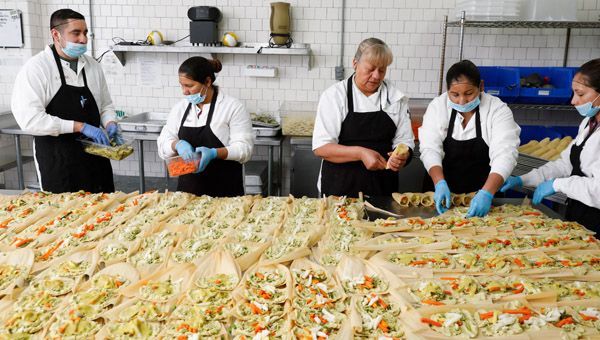
Training her cooks was easy — only once did she come back to the kitchen to find a disaster: thousands of tamales, some tiny, some huge. “I wanted them to be uniform,” says Villanueva. “I stopped my day and trained her to do it the right way.”
Human resources was a bigger challenge, she says: “It’s another world.” She hired a lawyer, who arrived with two thick binders full of labor regulations and now takes care of permits, legal agreements and “all the things I never thought about, such as OSHA regulations.”
You can’t (and shouldn’t) wear all of the hats.
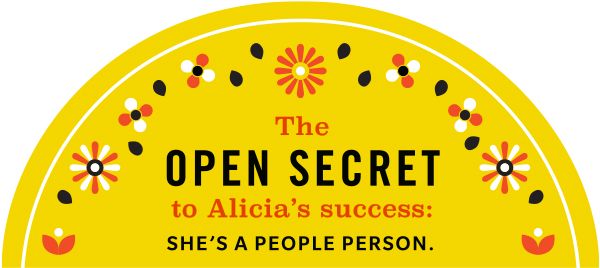
What Villanueva is best at — though she would never say so herself — is building and nurturing relationships with her customers. While her staff makes the tamales, she’s out cultivating her customer base.
“Catering relationships are things she’s worked hard to develop over the years, and her clients really love her,” says Puyana. “That’s a big part of her success.”
Business is personal.
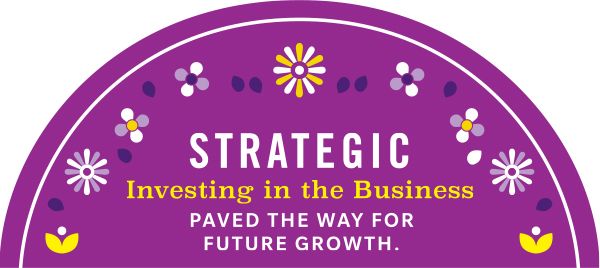
Catering and festivals are the foundation of Villanueva’s business, but to expand the catering side, she had to buy more delivery trucks; now she has five. She also joined an online meal-delivery service, and that meant buying four $1,220 warmers for the trucks. She expanded her team, too, from seven to 19 in the three years since she moved into her plant.
“I have to invest, invest, invest,” says Villanueva.
Moving into retail markets was her next big move, which meant paying for new packaging. Villanueva started knocking on store managers’ doors with samples, and her tamales started showing up in refrigerated cases in Bay Area stores. Then, just in time for Christmas 2017 — traditionally the time of tamales — Alicia’s Tamales Los Mayas landed in 44 Whole Foods stores in Northern California. “I feel like my baby is going to high school,” she told local media.
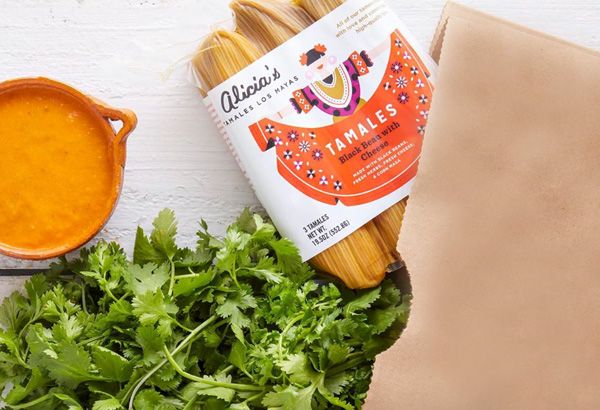
Now she’s muscling up for another big leap. So far, federal food safety rules limit her to selling only her vegetarian tamales — pumpkin, bean, cheese — in retail markets. And she can only sell in California. To sell her original chicken or carnitas tamales in stores and in other states, she needs to meet U.S. Department of Agriculture HACCP food safety regulations. HACCP has added another two binders to her bookshelf, and she’s hired a mentor/coach to help her navigate the regulatory maze.
Double down with profits.
“Investing profits back into the business is key to long-term success,” says Zwilling.
Entrepreneurs who sit back and enjoy the fruits of their labor too soon can see their business plateau or slide downhill.
“Of course, it depends on your own goals — not everyone wants a huge international business. The payoff is when you can declare success to yourself.”
Follow conventional wisdom when it comes to spending profits, he says. “Reinvest half of your profits back into the business, and take the other half for yourself, partners and investors.”
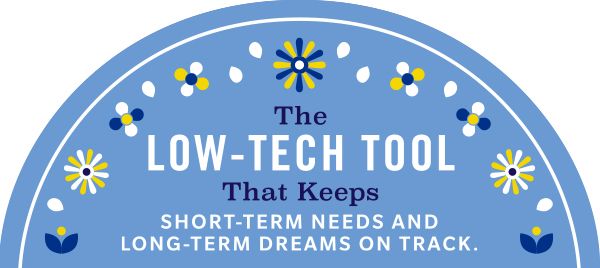
Almost 20 years in, Villanueva’s goal remains simple: “Do more.” But she keeps moving the goal line. She’d like to be firmly established in retail markets, then maybe the big warehouse chains. She wants to go national.
“One crazy dream I have now is to have drive-throughs, like McDonald’s, for Alicia’s Tamales,” she says.
Keeping forward momentum while dealing with day-to-day emergencies is key. Her right hand — and soon to be CEO — remains her son Pedro, now a college graduate, and the whole family helps out.
Villanueva depends on a 10-foot whiteboard on her office wall, with color-coded columns for immediate tasks (fix the truck), short- and long-term plans (meet a local produce market manager, get an appointment with a national supermarket chain) and goals (make Alicia’s zero waste).
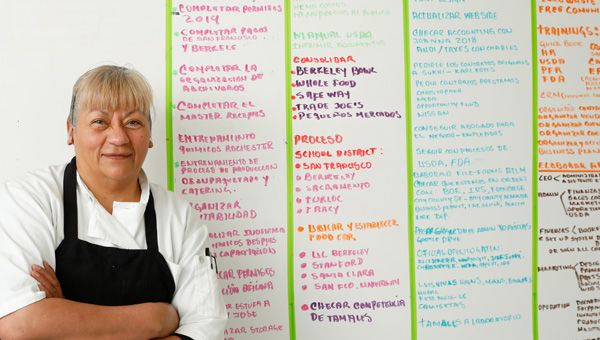
“I have stress, like everybody — but it’s nice stress: how to keep the business growing,” she says. “It’s not like the stress before: am I going to have the money to feed my kids?”
Not on the whiteboard, but on Villanueva’s mind: writing a new business plan. The plant felt scary big when she moved in, she says. “Now it’s getting small.”
Top photo: @Marija Vidal for Olio Studio
Startup fail rate
About half of all small businesses fail within five years, and only one-third make it to 10 years. — Small Business Association
Written by
Carol Ness
The information contained in this page is provided for general informational purposes only. The information is provided by Farmers® and while we endeavor to keep the information up to date and correct, we make no representations or warranties of any kind, express or implied, about the completeness, accuracy, reliability, suitability or availability with respect to this article or the information, products, services or related graphics, if any, contained in this article for any purpose. The information is not meant as professional or expert advice, and any reliance you place on such information is therefore strictly at your own risk.
Related articles

He Lost $400k and Wants Everyone to Know

My Business Drone “Paid for Itself in a Day”

